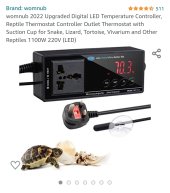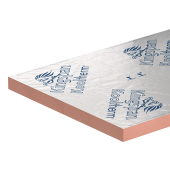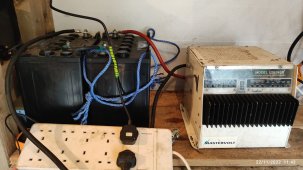Hi,
I just bought a property in Portugal and I'm planning to buy a small off grid solar system to power a small fridge, about 2 LED lights and also charge a laptop, 2 phones, and a router for the internet. This is really all I need to power and with the fridge I think it's no problem to turn it off in winter time, on cloudy days for example. I've got an offer from a portuguese solar shop for 1685 €, which included 450w Solarday panel, Victron Smartsolar 100/50 charge controller, Victron Phoenix 800/12 inverter, 24v battery breaker, 2x NBA 6v 260Ah battery and all the cables, connectors, fuses with the shipping also included.
I just found out on this forum, that powering a fridge off grid might not be that simple. I've looked through several shops with electronics around me and made some calculations regarding the consumption of various types of fridges, but it seems to me that no matter how much I try to calculate, it's impossible to say exactly how much will a fridge consume before buying it. I have come to a conclusion, that I have these options:
1. Buy a basic AC vertical fridge with a size of 5-6 cubic feet (all of the fridges in these options are about the same size), and with a freezer on the top. My rough calculations showed, that these types of fridges should consume about 840w/24h and would cost me between 300-400 €.
2. Buy an AC chest fridge/freezer with the same size. The prices were pretty similar to the vertical fridge as well as the consumption stats, but they've been calculated with the thermostat set on freezing and not refrigeration. So that means it should be lower with chest fridge than the vertical one. It also makes sense because the chest fridge maintains cool air better.
In terms of practicality, the vertical one is more practical, but it's not such a big issue for me. The thing is, I'm a little worried about the inrush current of the AC fridges. It was discussed here already and some people seemed to have a problem with this. It was a surprise for me because you cannot really find out the exact power of the inrush current with most fridges. So how am I supposed to know for sure that my inverter will be big enough to handle it? The last issue is, that my inverters max efficiency is 90%, so let's say up to 100 watts would be wasted daily just because I bought an AC fridge, which needs to go through an inverter. That's about 6,5 % of the batteries whole capacity. Also as I mentioned, besides the fridge, I only want to charge a few devices occasionally and use a few led lights which has brought me to my other options.
3. Friobat DC chest freezer. It's a company from Spain I found online. They offer DC appliances in rather affordable price. I wasn't able to find out so far, if this freezer's thermostat can be set on temperatures above 0°C. I heard, that you can convert a freezer to a fridge, but I have no experience in this, and I wanted to avoid doing stuff like that. The consumption of this freezer should be around 480w/24h and the price is 823€.
4. Friobat DC vertical fridge with freezer on the top. The consumption should be around 840w/24h just like the AC fridges and the price is 747,35 €.
5. Sunstar DC chest fridge/freezer. The consumption should be about 260w/24h, and the price would be between 1300 and 1500€ with the shipping. These stats are probably very similar to any other of those high-end DC fridges, like Sundanzer, Steca etc.
I will say again, that I don't expect these consumption estimates to be a rule of thumb. With the AC fridges, I just used their annual consumption estimate and added extra 70 %, because that seemed like a more realistic consumption estimate. With the DC ones, I just added a little bit, because their consumption estimates seem to be usually closer to real life than AC ones.
So the thing is, if I buy a DC fridge, I would need to turn on the inverter just occasionally when I want to charge something. And that I think would make the system pretty efficient. The second advantage is, that a DC fridge would probably consume less, and that means more battery storage in days with bad weather. The last advantage is, that in this case, I might be able to go for a smaller inverter and save 100-200€. I'm not sure if it's a good idea though, because there might be a situation once, where I'd need to plug in something more powerful, and I won't be able to do it. But then again, let's say I would still take the same inverter and in this case, the 350-450 € that I would pay extra for a DC fridge could be used for a third battery, or a second panel.
I'd be grateful for any advice
Jan
I just bought a property in Portugal and I'm planning to buy a small off grid solar system to power a small fridge, about 2 LED lights and also charge a laptop, 2 phones, and a router for the internet. This is really all I need to power and with the fridge I think it's no problem to turn it off in winter time, on cloudy days for example. I've got an offer from a portuguese solar shop for 1685 €, which included 450w Solarday panel, Victron Smartsolar 100/50 charge controller, Victron Phoenix 800/12 inverter, 24v battery breaker, 2x NBA 6v 260Ah battery and all the cables, connectors, fuses with the shipping also included.
I just found out on this forum, that powering a fridge off grid might not be that simple. I've looked through several shops with electronics around me and made some calculations regarding the consumption of various types of fridges, but it seems to me that no matter how much I try to calculate, it's impossible to say exactly how much will a fridge consume before buying it. I have come to a conclusion, that I have these options:
1. Buy a basic AC vertical fridge with a size of 5-6 cubic feet (all of the fridges in these options are about the same size), and with a freezer on the top. My rough calculations showed, that these types of fridges should consume about 840w/24h and would cost me between 300-400 €.
2. Buy an AC chest fridge/freezer with the same size. The prices were pretty similar to the vertical fridge as well as the consumption stats, but they've been calculated with the thermostat set on freezing and not refrigeration. So that means it should be lower with chest fridge than the vertical one. It also makes sense because the chest fridge maintains cool air better.
In terms of practicality, the vertical one is more practical, but it's not such a big issue for me. The thing is, I'm a little worried about the inrush current of the AC fridges. It was discussed here already and some people seemed to have a problem with this. It was a surprise for me because you cannot really find out the exact power of the inrush current with most fridges. So how am I supposed to know for sure that my inverter will be big enough to handle it? The last issue is, that my inverters max efficiency is 90%, so let's say up to 100 watts would be wasted daily just because I bought an AC fridge, which needs to go through an inverter. That's about 6,5 % of the batteries whole capacity. Also as I mentioned, besides the fridge, I only want to charge a few devices occasionally and use a few led lights which has brought me to my other options.
3. Friobat DC chest freezer. It's a company from Spain I found online. They offer DC appliances in rather affordable price. I wasn't able to find out so far, if this freezer's thermostat can be set on temperatures above 0°C. I heard, that you can convert a freezer to a fridge, but I have no experience in this, and I wanted to avoid doing stuff like that. The consumption of this freezer should be around 480w/24h and the price is 823€.
4. Friobat DC vertical fridge with freezer on the top. The consumption should be around 840w/24h just like the AC fridges and the price is 747,35 €.
5. Sunstar DC chest fridge/freezer. The consumption should be about 260w/24h, and the price would be between 1300 and 1500€ with the shipping. These stats are probably very similar to any other of those high-end DC fridges, like Sundanzer, Steca etc.
I will say again, that I don't expect these consumption estimates to be a rule of thumb. With the AC fridges, I just used their annual consumption estimate and added extra 70 %, because that seemed like a more realistic consumption estimate. With the DC ones, I just added a little bit, because their consumption estimates seem to be usually closer to real life than AC ones.
So the thing is, if I buy a DC fridge, I would need to turn on the inverter just occasionally when I want to charge something. And that I think would make the system pretty efficient. The second advantage is, that a DC fridge would probably consume less, and that means more battery storage in days with bad weather. The last advantage is, that in this case, I might be able to go for a smaller inverter and save 100-200€. I'm not sure if it's a good idea though, because there might be a situation once, where I'd need to plug in something more powerful, and I won't be able to do it. But then again, let's say I would still take the same inverter and in this case, the 350-450 € that I would pay extra for a DC fridge could be used for a third battery, or a second panel.
I'd be grateful for any advice
Jan





